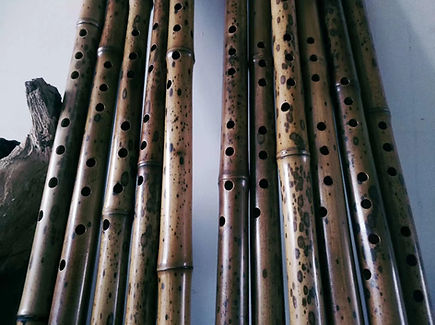top of page

ARCHIVED WEBSITE
The Ways Of Wudang
finding balance, one breath at a time...

AW:
Wu Dao Music:
The Way to the Spirit - Music
A cornerstone to Daoist practice and Chinese culture revolves around self practice and musical cultivation. While we practice martial arts for our body and study the classics for our mind, we practice music for the spirit.
Cultures throughout history have placed musical interpretation and performance at a high philosophical standard and used it as a means to cultivate a better emotional balance in life. Chinese culture is not different. In some respects, Chinese culture has even taken this practice further in self introspection. In Confucian classics, it is said that by listening to one play music, you can glimpse a piece of their true self. Whether it is our attuned mind using music as a brush to paint the broad strokes of our experience through the color of sound or if it is simply our subconscious spilling over and influencing the piece of music that we are playing is different depending on the person or culture that you ask. Either way, if it originates internally and expresses through the external or if it is cultivated externally in order to better translate the internal is second to the fact that there is a link between the two. In Daoist practice, music is a means to influence this pairing, no matter the belief pattern that you uphold.
By continuing our practice and performing music, we use the tones and experience as a means of self introspection. Not only can we become better musicians and play songs that we enjoy, but we can look into ourselves for balance or issues that may need correcting. As we begin to play music the first lesson is not necessarily how to make but rather how to receive. Before we can play a good song we must be able to hear a good song. One goal of traditional Chinese music is to become better listeners, as it is with other practices in Daoism such as Qigong, Meditation, and other art forms.

The Bamboo Flute
"Xiao" 箫
Learning How to Play the Xiao
One of the personal hardships in learning the Xiao is being able to find clear instruction in English online. There is only recently more information coming out even in Chinese on this instrument. This makes finding reliable basics sometimes difficult especially if you do not read or speak Chinese. While this is not intended to be a replacement for musical instruction, and while no means it can be considered to that level of professionalism, I do hope that this will continue to be a source that people can use in their learning. At the very least it will be a motivation for those of us that want to learn and a foundation for something more advanced in the future. One day, it is my hope that this will grow into something far greater. For now, I hope that you enjoy this project and find the information helpful.
Through the links below, you can find basic instruction on how to play the vertical Chinese Bamboo Flute, or Xiao. One of the main goals of American Wudang is to spread the teachings of traditional arts like this. This is an ongoing project that will be updated periodically with new songs and notation.

bottom of page


